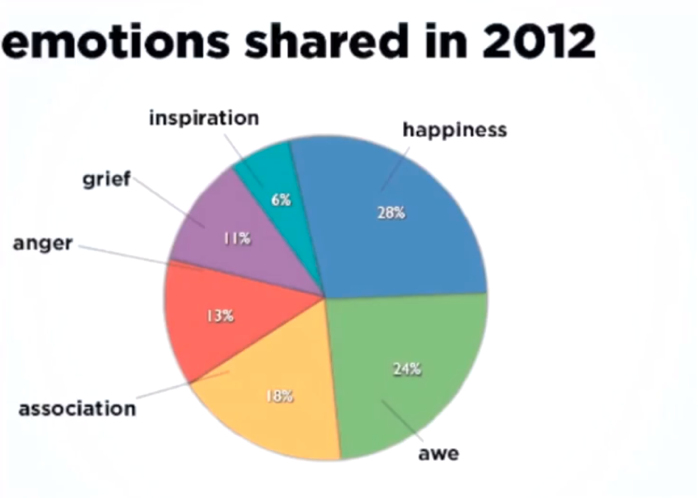If you shared a link online 2012, you were more likely doing so out of happiness than any other emotion. So says data from Buzzfeed, which crunched its own numbers from its viral crazy content machine.
Those findings, which followed five years of data work, confirmed what Buzzfeed founders had always thought, said director of partner developments Aswini Anburajan: people share content that triggers powerful emotions.
Reactions from surveyed users were broken into six emotions, as discussed at Brooklyn Tech Meetup:
- happiness — 28 percent
- awe — 24 percent
- association — 18 percent
- anger — 13 percent
- grief — 11 percent
- inspiration — six percent
Anburajan came to the Brooklyn Tech Meetup in last month, along with Ky Harlin, Director of Data Science, to show how a site known for virality pins its success on its data technology. More than 200 publishers have allowed Buzzfeed to track their traffic in order to get access to its proprietary analytics.
Harlin details Buzzfeed’s system for first identifying content likely to go viral, organizing the site to draw attention to the most powerful content and then letting the organic social sharing accelerate it:
- Buzzfeed uses data to assign content value based on the source’s previous sharing clout and then assesses the ‘shareability’ of the content itself.
- For content likely to go viral, they will put it out with a few different headlines and images and test them for thirty or forty-five minutes. They use their proprietary analytics to assess the behavior of each version in that short time-frame, then take down all but the best performing version.
- Content behaves differently on different social networks. It rises sharply and falls quickly on Twitter, in only a matter of hours. On Facebook, content rises and falls over the course of a few days. On Pinterest, content can keep spreading for as much as a month, he said.
- Half of traffic to Buzzfeed and its partner network is coming from social networks.
- Search traffic has declined across the network by 30%.
- Buzzfeed publishes 300 or 400 articles per day, and each one is given a shareability ranking.
Buzzfeed’s analytics are strong enough that they were able to predict the resurgence of Digg last October, which was realized the following March. While Buzzfeed’s data side appears to be in ship shape, it recently had some confusion in Rhode Island between editorial and advertising [Washington Post].







